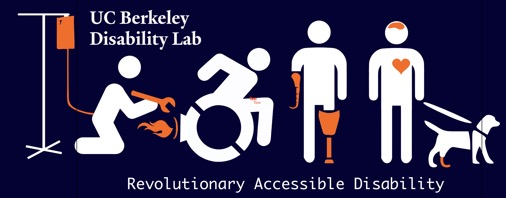CripTech Manifesto
From UC Berkeley’s RadMad Lab
- Too often, disabled people have been the putative target of “inclusive design.” However, this is done with imagined, fictionalized, reductive, disabled persons. What is missing are the actual bodies and minds and experiences of disabled users. The CripTech Manifesto
- Normate engineers and architects are interested in “sophisticating function,” that is, the new and shiny: The CripTech Manifesto
- Folding white cane vs. laser range-finding cane
- wheelchair that can climb chairs vs. wheelchair that is user-serviceable, waterproof and has headlights
- What happens when disabled people gain the skills to design for ourselves?
- Ala Costa — designed a program for autistic youth transitioning to adulthood.
- Tokyo U — designing a user-led research venture that empowers disabled people to be co-researchers, co-publishers, and co-creators.
- SF Lighthouse for the Blind — Designing a building that is not “accessible” to the blind, but is “delightful” to its blind occupants.
- What do we need to get from here?
- The basic tools of design and making need to be accessible themselves.
- Blind Arduino Project by Dr. Josh Miele (Smith-Kettlewell Eye Research Institute)
- Disability Lab @Cal by Dr. Karen Nakamura (UC Berkeley)
- STEM visualizations need to be accessible
- We need to #occupy — disabled people need to be in places where they can make that difference. Just being in the room changes things.
- The basic tools of design and making need to be accessible themselves.
- The CripTech movement needs to be inclusive and intersectional.
- Understand disability’s intersections with
- poverty
- gender
- sexuality
- racialized minoritization
- access to to adequate healthcare and housing
- effects of trauma, war and dislocation
- Positionality: No one can understand or speak for all disabilities. No one can even understand or speak for all variations of their own disability. We need #powerinnumbers
- We cannot make some disabilities “bad” disabilities that we don’t discuss; addiction and fatness being two primary marginalized groups in the disability community.
- Understand disability’s intersections with

What is disability studies?
Become familiar with an intro to disability studies terms
Learn about Berkeley’s history with the disability rights movement
Check out UC Berkeley’s Disability Studies Program here!
